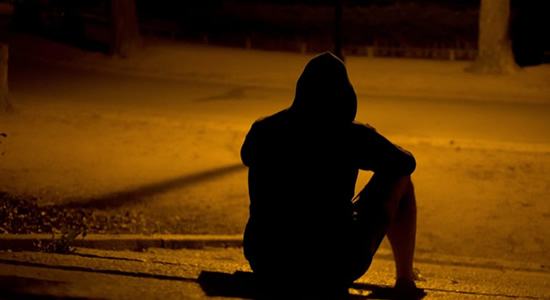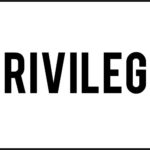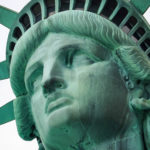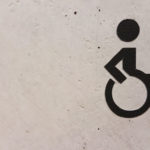
Courtesy of Peakpx
You might argue that our President’s rhetoric doesn’t contribute to the increase in violence so, for now, let’s agree to disagree. You can still relate to David Brook’s New York Times column below.
If we can’t ban the guns people use to murder, can we step in before they reach for that gun? Why don’t lay people, especially men, get trained to become part of the solution?
What if you called your local school district, religious organization, or your County Social Services Department and asked?
The New Cold War: The forces of division and the forces of connection.
By David Brooks
There’s always a pile of bodies at these massacre sites. Whether it’s at a synagogue, church, nightclub or school, there’s always an assault weapon, or a bunch of them. There’s always the survivors clutching each other, weeping in little clumps outside. And there’s always one other thing.
A lonely man.
There’s always one guy, who fell through the cracks of society, who lived a life of solitary disappointment and who one day decided to try to make a blood-drenched leap from insignificance to infamy.
There’s always a guy like the Pittsburgh synagogue attacker Robert Bowers, who, according to Times reporting, was friendless in high school and a solitary ghost as an adult, who spent his evenings sitting in his car smoking, listening to the radio, and living, as one acquaintance put it, “in his own little world.”
Guys like that are drawn to extremist ideologies, which explain their disappointments and give them a sense that they are connected to something. Guys like that convince themselves that by massacring the innocents they are serving as a warrior in some righteous cause.
These mass killings are about many things — guns, demagogy, etc. — but they are also about social isolation and the spreading derangement of the American mind.
Killing sprees are just one manifestation of the fact that millions of Americans find themselves isolated and alone. But there are other manifestations of this isolation, which involve far more carnage.
The suicide epidemic is a manifestation. The suicide rate is dropping across Europe. But it has risen by 30 percent in the United States so far this century. The suicide rate for Americans between 10 and 17 rose by more than 70 percent between 2006 and 2016 — surely one of the most shocking trends in America today.
Every year nearly 45,000 Americans respond to isolation and despair by ending their lives. Every year an additional 60,000 die of drug addiction. Nearly twice as many people die each year of these two maladies as were killed in the entire Vietnam War.
The rising levels of depression and mental health issues are yet another manifestation. People used to say that depression and other mental health challenges were primarily about chemical imbalances in the brain.
But as Johann Hari argues in his book “Lost Connections,” these mental health issues are at least as much about problems in life as one’s neurochemistry. They are at least as much about protracted loneliness, loss of meaningful work, feeling pressured and stressed in the absence of community.
“Protracted loneliness causes you to shut down socially, and to be more suspicious of any social contact,” Hari writes. “You become hypervigilant. You start to be more likely to take offense where none was intended, and to be afraid of strangers. You start to be afraid of the very thing you need most.”
This sounds like a pretty good summary of American politics in 2018.
I keep coming back to this topic because the chief struggle of the day is sociological and psychological, not ideological or economic. The substrate layer of American society — the network of relationships and connection and trust that everything else relies upon — is failing. And the results are as bloody as any war.
Maybe it’s time we began to see this as a war. On the one side are those forces that sow division, discord and isolation. On the other side there are all those forces in society that nurture attachment, connection and solidarity. It’s as if we’re witnessing this vast showdown between the rippers and weavers.
And here’s the hard part of the war: It’s not between one group of good people and another group of bad people. The war runs down the middle of every heart. Most of us are part of the problem we complain about.
Most of us bought into a radical individualism that, as Tocqueville predicted, cuts each secluded self off from other secluded selves. Most of us buy into a workaholic ethos that leaves us with little time for community. Most of us live in insular media and social bubbles that provide us with Pravda-like affirmations of our own moral superiority. Most of us hew to a code of privacy that leads us to not know our neighbors.
The good news is that most of us are part of the solution as well.
Most of us admire and want to be the teacher who reaches out to the lonely boy. Most of us mentor and serve people unlike ourselves. Most of us are part of the chosen families that Americans are constructing to replace the decimated biological ones.
It’s easier to destroy trust than to build it, so the rippers have an advantage. But there are many more weavers, people who yearn to live in loving relationships and trusting communities. The weavers just need what any side in a war needs: training so we know how to wage it, strategies so we know how to win it and a call to arms so we know why we’re in it.
P.S. Tragedy Continues: https://www.nextavenue.org/coping-grief-pittsburgh-tragedy/






























